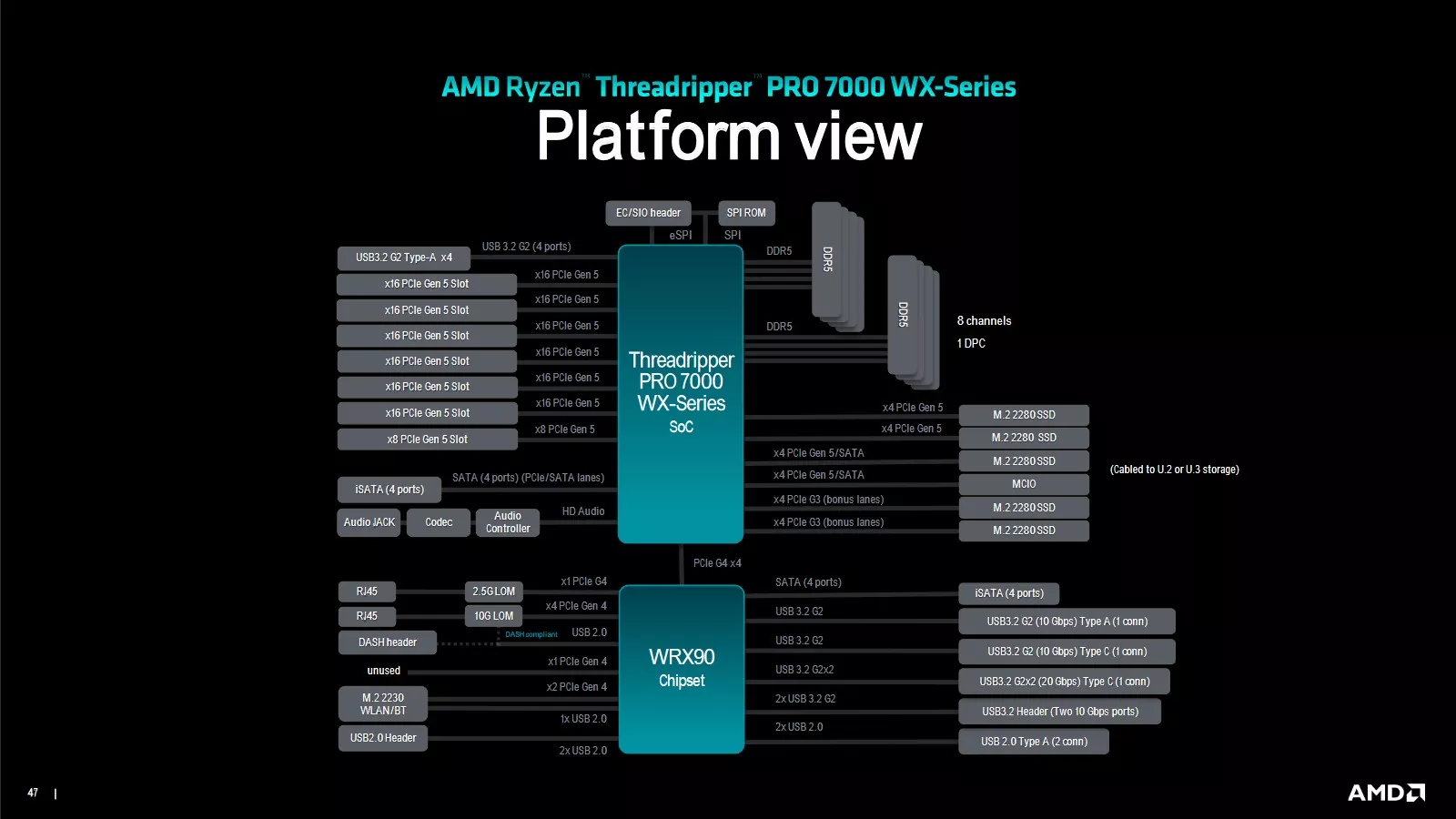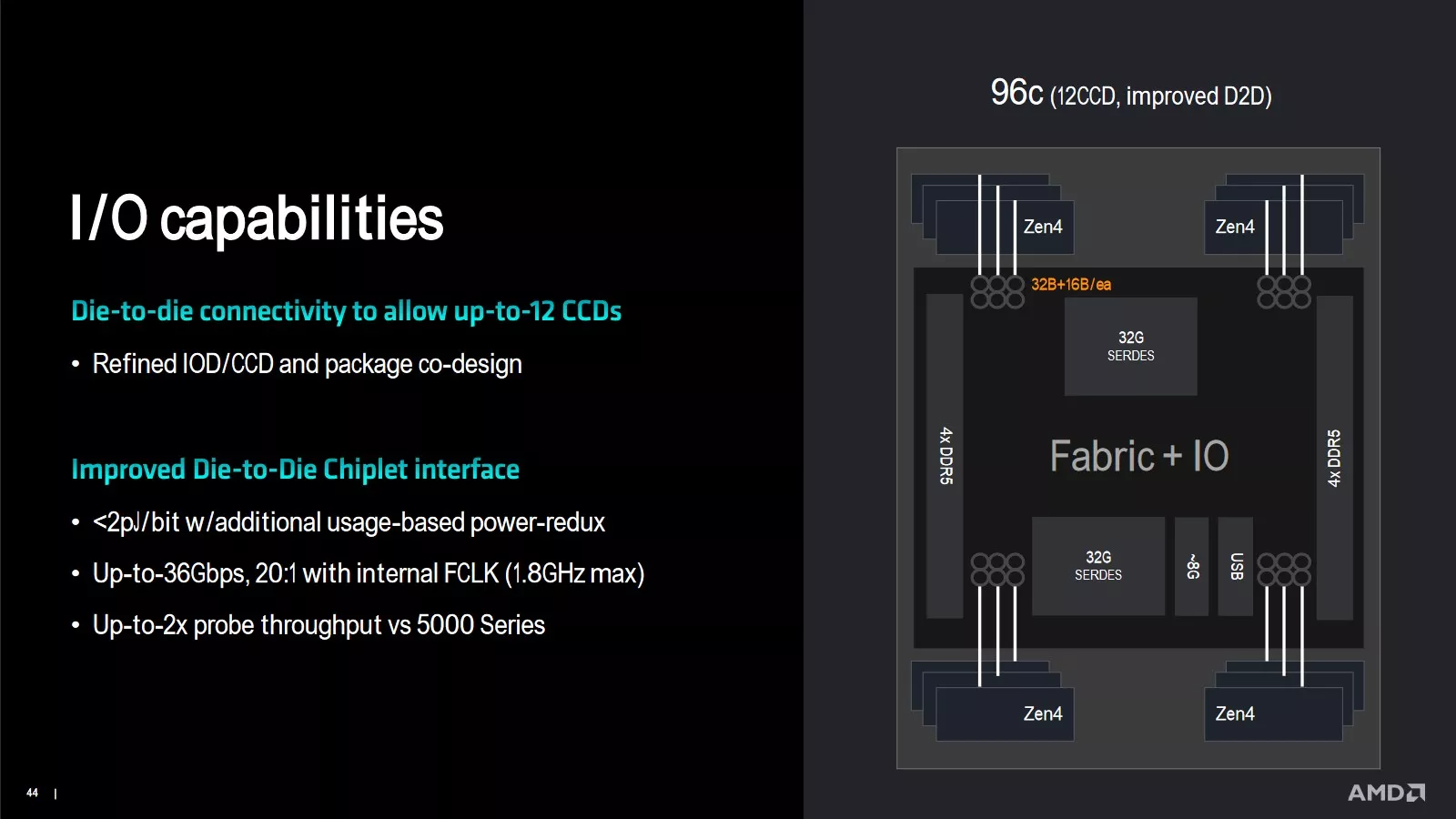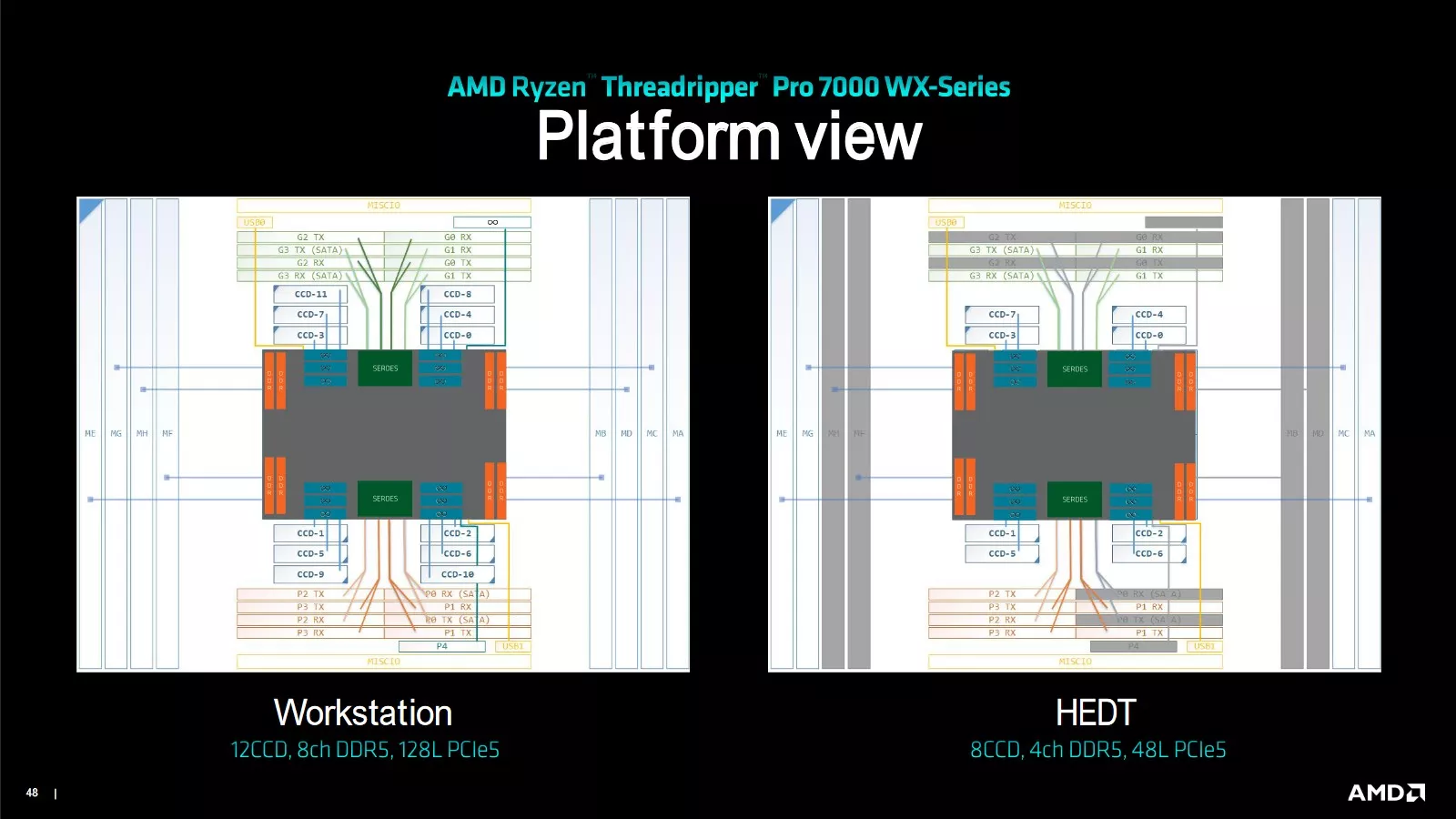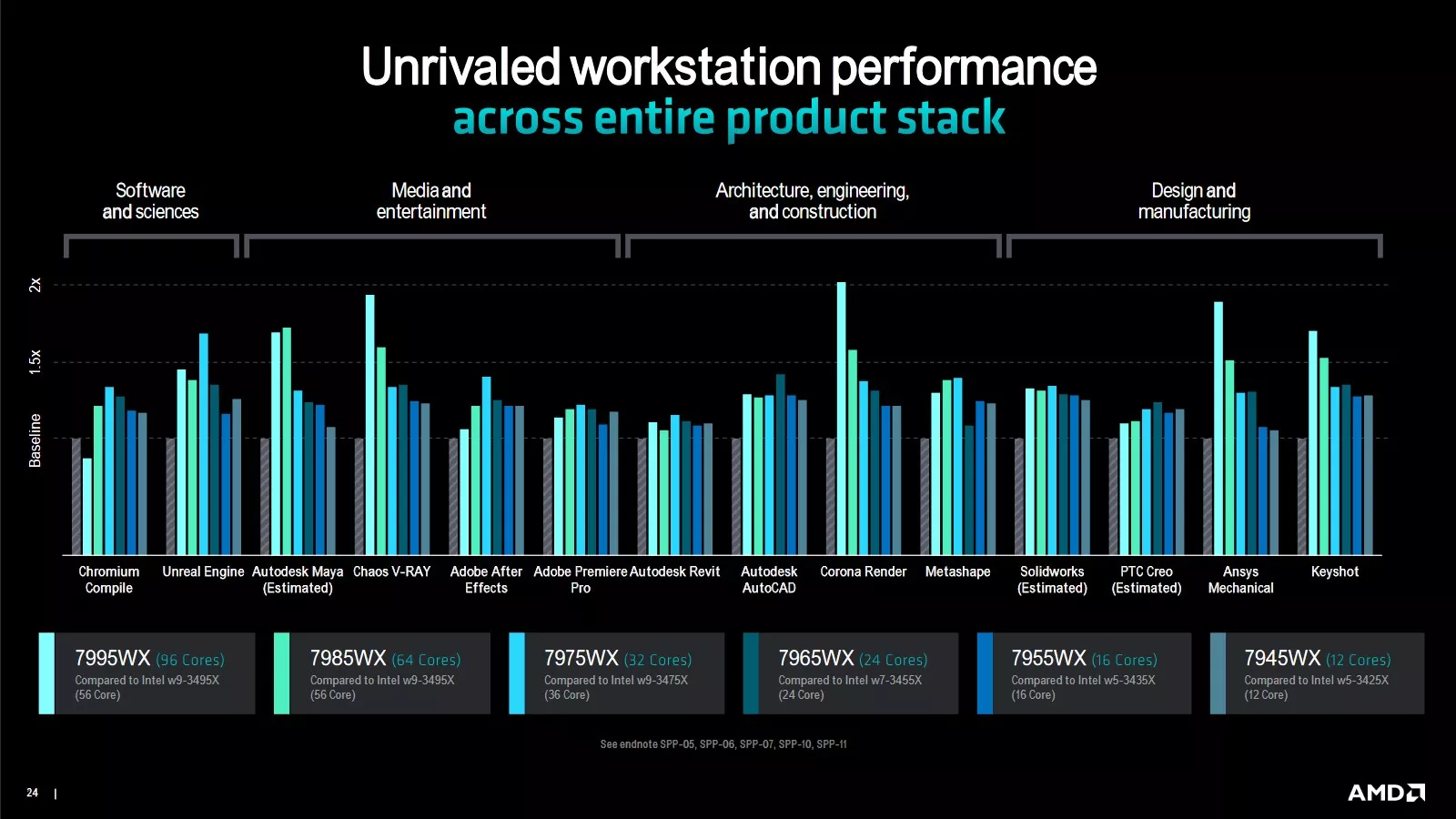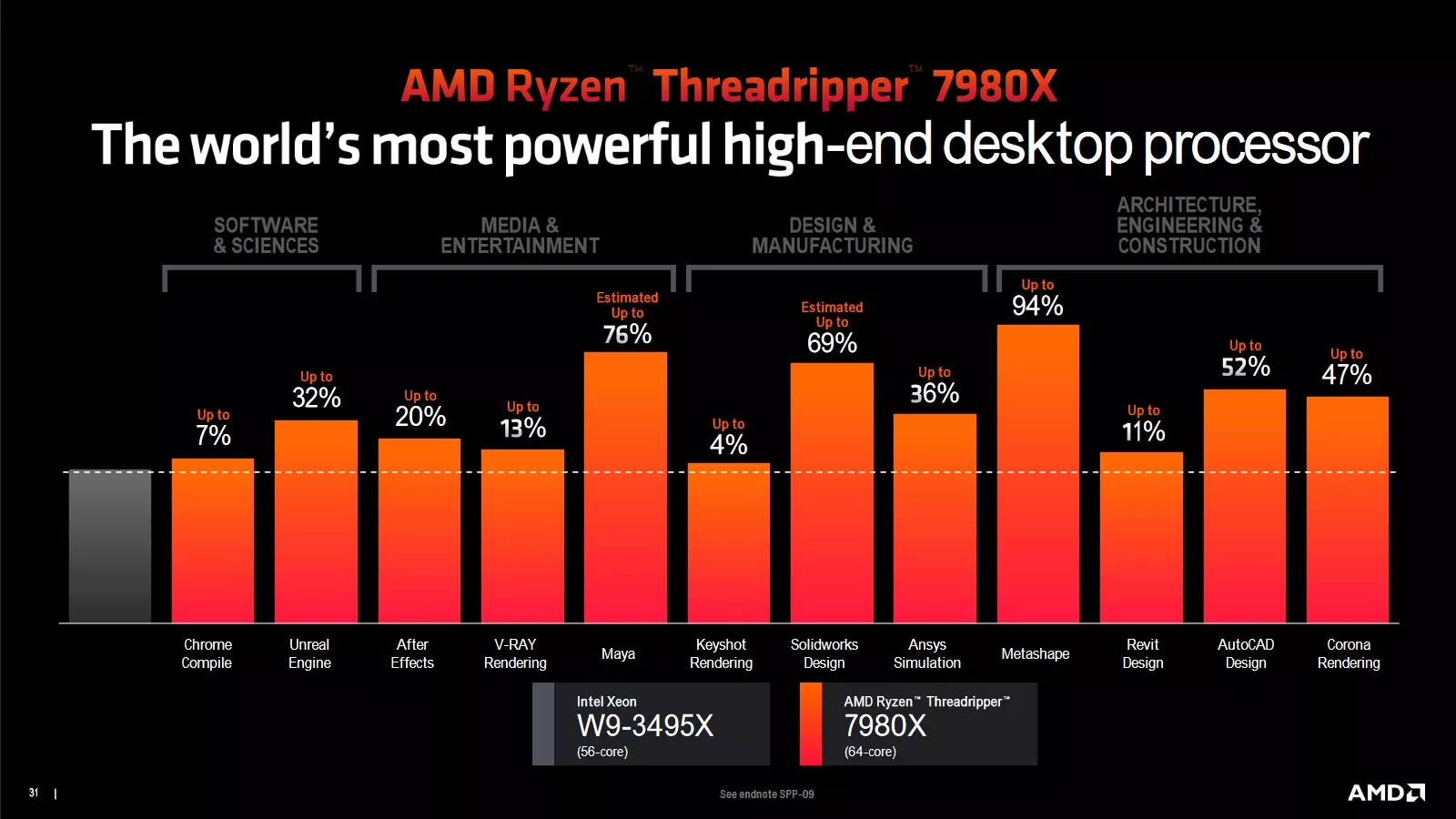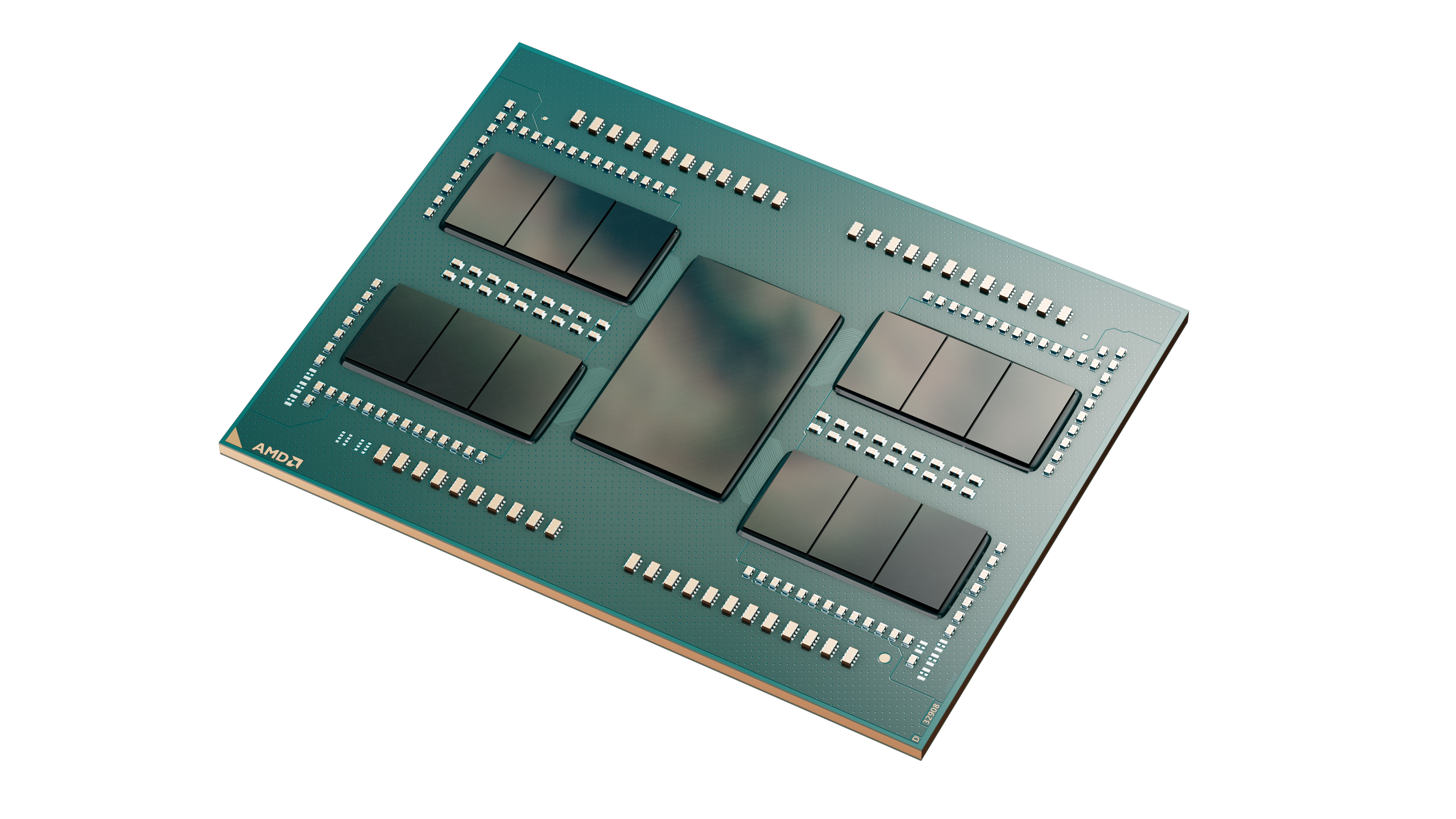
AMD is bringing its high-end desktop CPU lineup back with Threadripper 7000.
The Highlights
- The Zen 4 architecture comes to Threadripper
- PCIe lane count is cut down on the non-PRO CPUs
- Overclocking is enabled across the stack, even for the 96-core 7995WX
- Prices for the new HEDT CPUs are higher than the 3000 series
- Release Date: November 21, 2023

The big news today is AMD’s return to consumer-class High-End Desktop (HEDT) computing -- arriving November 21, hot on the heels of one of the weakest launches in recent years from Intel. This is exciting for enthusiasts who remember the Intel X-class and early AMD Threadripper days, assuming it works out well, and we’ll be testing them to determine if that’s the case. There hasn’t really been an HEDT lineup from either of these companies for prosumer/consumer class users outside of the Ryzen 5000 Threadripper PRO series, which isn’t really the same thing.
AMD’s bringing the high-end desktop back with a new generation of Threadripper CPUs – and this time it’s not just PRO branded workstation parts. AMD told us that it previously thought that it could cover the consumer market with a single platform, but AMD got lots of feedback from some of those consumers and definitely a lot of reviewers. They wanted access to a real HEDT platform again.
AMD also announced pricing for this last-minute. The range is $1500 to $5000 for the non-Pro CPUs.
Credits
Host, Writing
Steve Burke
Writing, Web Editing
Jeremy Clayton
Video Editing
Mike Gaglione
Tim Phetdara
Threadripper 7000 PRO CPUs
We actually abandoned Threadripper when it didn’t get carried forward outside of the PRO line in the last generation because it was just too expensive, and it didn’t make sense for us to use in our workstations anymore.
AMD said in a statement directed to consumers, “We heard you, we’re bringing it back, it’s simple as that.” AMD is launching two brand new classes of CPU with a new socket to run them. They’ll have more cores, higher clock speed, and much expanded I/O capabilities versus the previous Threadripper PRO 5000 series. There’s some nuance though, so we’ll talk through that here. They’re also all unlocked for overclocking, so maybe we can have some fun with that. We’ve already asked AMD if we can make a video with its overclocking team like we have before, though we’re waiting on confirmation.

AMD Threadripper 7000 PRO Specs
| Cores / Threads | Boost / Base Clock | L3 Cache | Mem Channels | TDP | |
| AMD Ryzen Threadripper PRO 7995WX | 96/192 | 5.1GHz / 2.5GHz | 384MB | 8 | 350W |
| AMD Ryzen Threadripper PRO 7985WX | 64/128 | 5.1GHz / 3.2GHz | 256MB | 8 | 350W |
| AMD Ryzen Threadripper PRO 7975WX | 32/64 | 5.3GHz / 4.0GHz | 128MB | 8 | 350W |
| AMD Ryzen Threadripper PRO 7965WX | 24/48 | 5.3GHz / 4.2GHz | 128MB | 8 | 350W |
| AMD Ryzen Threadripper PRO 7955WX | 16/32 | 5.3GHz / 4.5GHz | 64MB | 8 | 350W |
| AMD Ryzen Threadripper PRO 7945WX | 12/24 | 5.3GHz / 4.7GHz | 48MB | 8 | 350W |
Let’s get right into the specs. Despite the return of non-PRO Treadripper being exciting, we’ll start with the new PRO 7000 WX-Series. There are 9 new CPUs to look at in total, with 6 of them being PRO.
These CPUs should be thought of as the basis for the new generation, as the PRO lineup has the full feature set, and then it gets stripped down as you go to the non-PRO.
The top SKU is the 7995WX with 96 Zen4 cores and 192 threads running at up to 5.1GHz boost and 2.5GHz base clock. Cache is up too, with the 7995WX getting 384MB of L3 – that’s more than the 256MB the Threadripper PRO 5000 series topped out at. That’s probably enough cache where you could probably run some old games entirely in cache if they were written to do so. However, it’s still way below the insane 768MB of the EPYC 3D V-cache server CPUs. The switch to Zen4 cores also doubles the amount of L2 cache from 512KB to 1MB per core on the new Threadripper 7000s.
Down from the 96-core CPU, the rest of the PRO line has CPUs at core counts of 64, 32, 24, 16, and all the way down to 12. The 12-core is the 7945WX, which boosts to 5.3GHz and has a base clock of 4.7GHz.
These 12-cores in Threadripper are always kind of bizarrely low on cores considering there are desktop CPUs from AMD that are also 12 core or even more in the case of the R9 7950X. The point of a SKU like that would be some kind of system that doesn’t really need much in the way of multi-threaded performance, but does need to run a massive amount of I/O, such as drives and network cards.
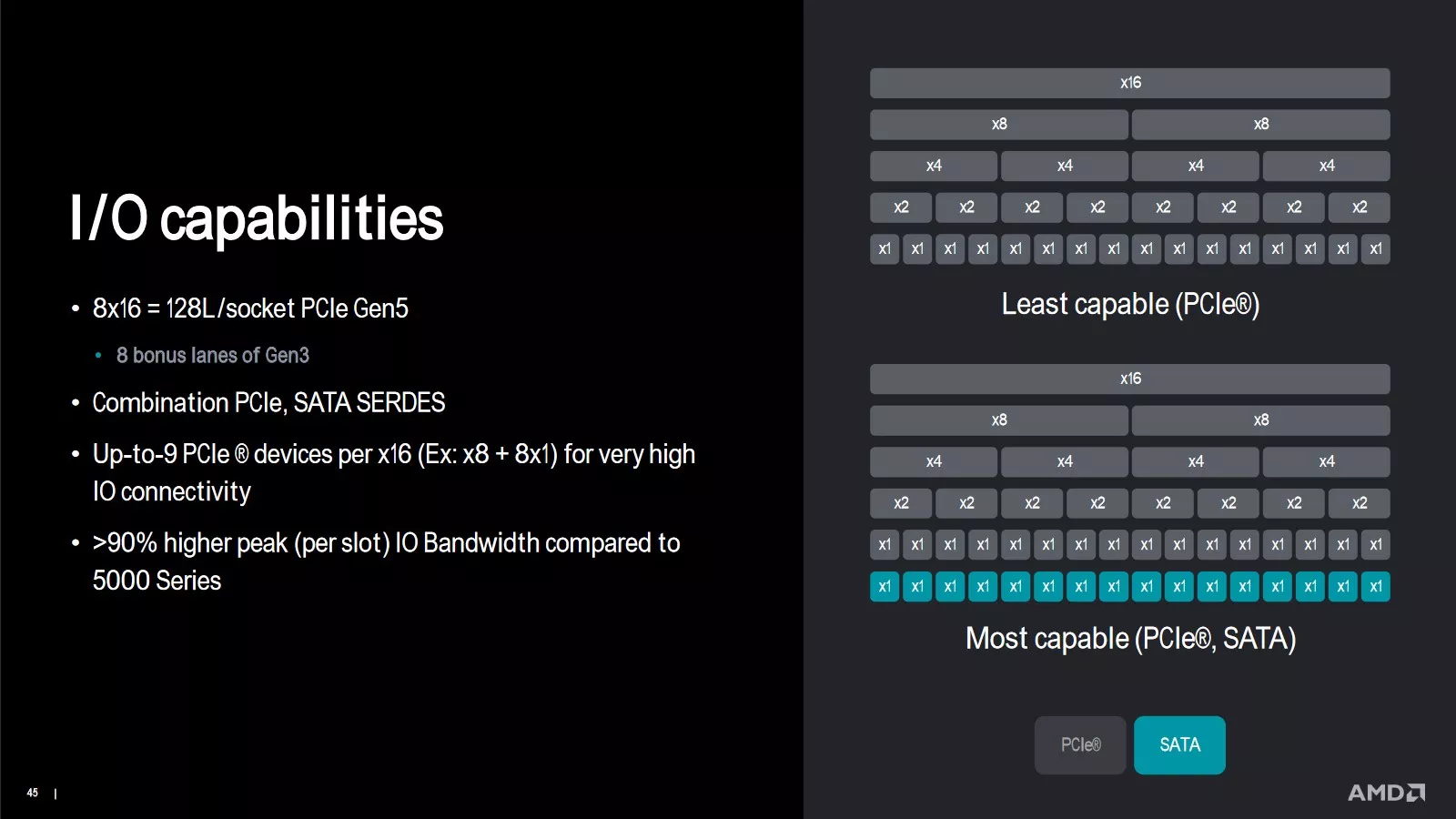
Speaking of that, all of the PRO CPUs have 128 lanes of PCIe Gen5 connectivity straight from the CPU. That’s enough for up to eight 16-lane PCIe devices. There’s also 16 more lanes off the new WRX90 chipset, albeit at lower speed.
They’ll also support 8 channels of DDR5-5200 RDIMMs for up to 2TB of RAM at a theoretical 266GB/s peak bandwidth, according to AMD. Memory overclocking is also technically supported, but good luck with an OC on 2TB of RAM. Also, have fun waiting for the memory training – you might want to go do some errands while it tries to boot up.
The TDP is 350W for the entirety of the new lineup – no derating power budget on lower SKUs here. AMD told us that having more power and better voltage regulation was part of the driver in moving to the new sTR5 socket, but that these should also be the most power efficient Threadripper CPUs yet. That doesn’t make them low-power, AMD’s just saying they do more work for the amount of power consumed.
These, like the previous generations of PRO CPUs before them, are aimed at businesses and enterprise workstations where additional security and management features are needed.
Threadripper 7000 CPUs - HEDT
| Cores / Threads | Boost / Base Clock | L3 Cache | Mem Channels | TDP | |
| AMD Ryzen Threadripper 7980X | 64/128 | 5.1GHz / 3.2GHz | 256MB | 4 | 350W |
| AMD Ryzen Threadripper 7970X | 32/64 | 5.3GHz / 4.0GHz | 128MB | 4 | 350W |
| AMD Ryzen Threadripper 7960X | 24/48 | 5.3GHz / 4.2GHz | 128MB | 4 | 350W |
Now we get into the fun stuff for enthusiasts in our audience. Hopefully these CPUs work out well and perform well, because we would like to work on Threadripper again; it’s been a while.
The Threadripper 7000 non-PRO CPUs will be available in 3 variants, and are what make up AMD’s return to the consumer or “prosumer” high-end desktop market. At the top of the stack is the 7980X, with 64 cores and 128 threads and an advertised boost to 5.1GHz, and has 256MB of L3 cache.
Down from that is the 7970X with 32 cores, slightly higher boost clock, and a much higher 4GHz base clock. L3 cache is cut in half though, down to 128MB. There’s also a 7960X, which is the same thing but with only 24 cores and the accompanying changes.
Interestingly, that’s more than the two lowest core count PRO CPUs. That makes sense though if AMD suspects pro users mostly want the I/O and don’t need cores.
PCIe lanes on the non-PRO are cut down versus the PRO, with only 48 Gen5 lanes off the CPU and 88 total on the new TRX50 HEDT platform. Memory support is cut down as well, dropping to 4 channels, but keeping support for error-correcting RDIMMs.
Like the PRO CPUs, all of the non-PRO have the same 350W TDP. Unlike the PRO, they don’t have the same business–oriented security and management features, but those are unlikely to be important to an individual or a small business.
I/O Capabilities
Now we’ll move on to the rest of the I/O capabilities. Threadripper 7000 will support splitting up any group of 16 lanes to support up to to 9 devices. An example would be one device as x8, then 8 more devices as x1. This would be accomplished via specialized add-in cards or maybe purpose-built motherboards.
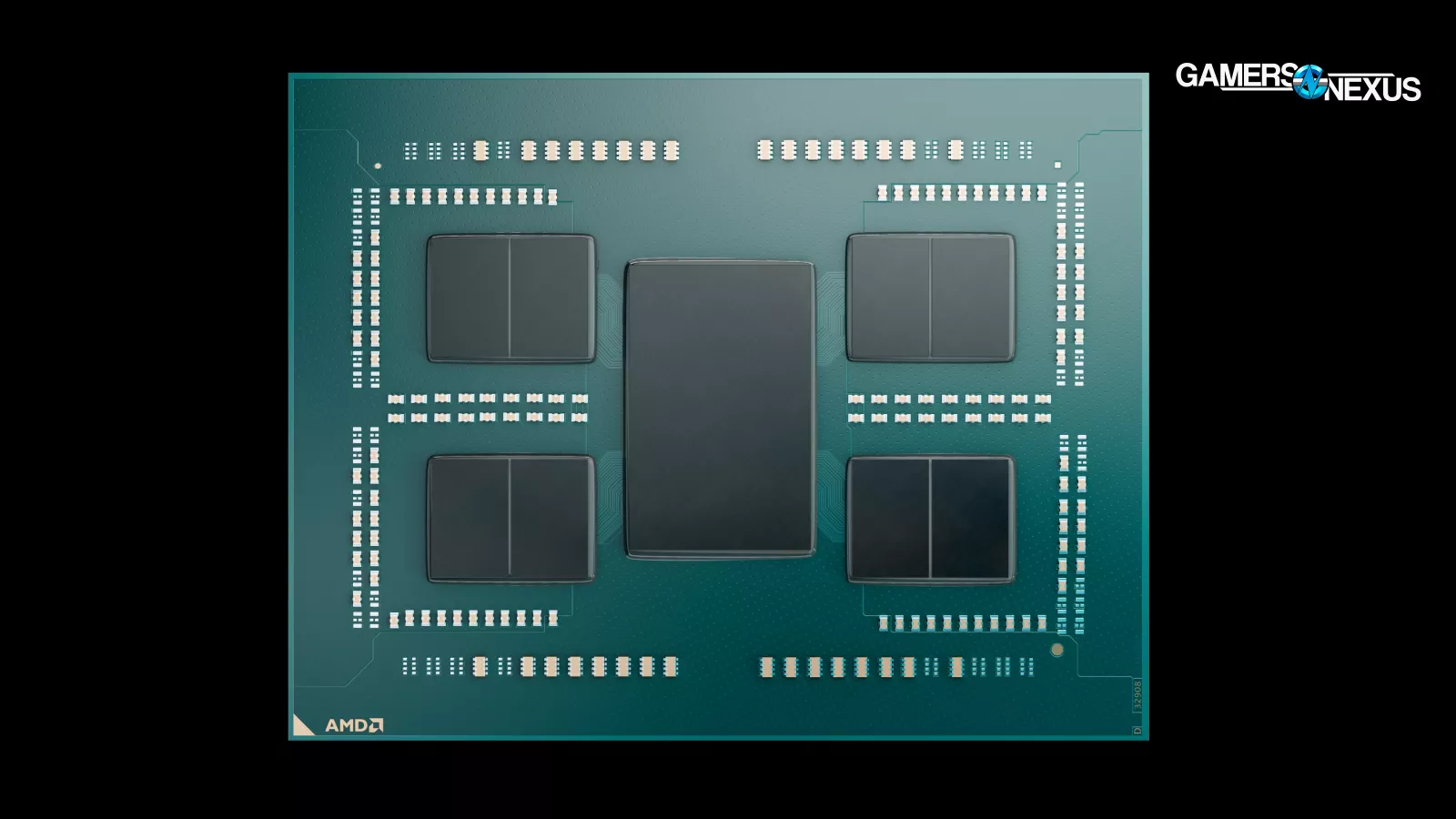
Threadripper 7000 with 8 CCDs. 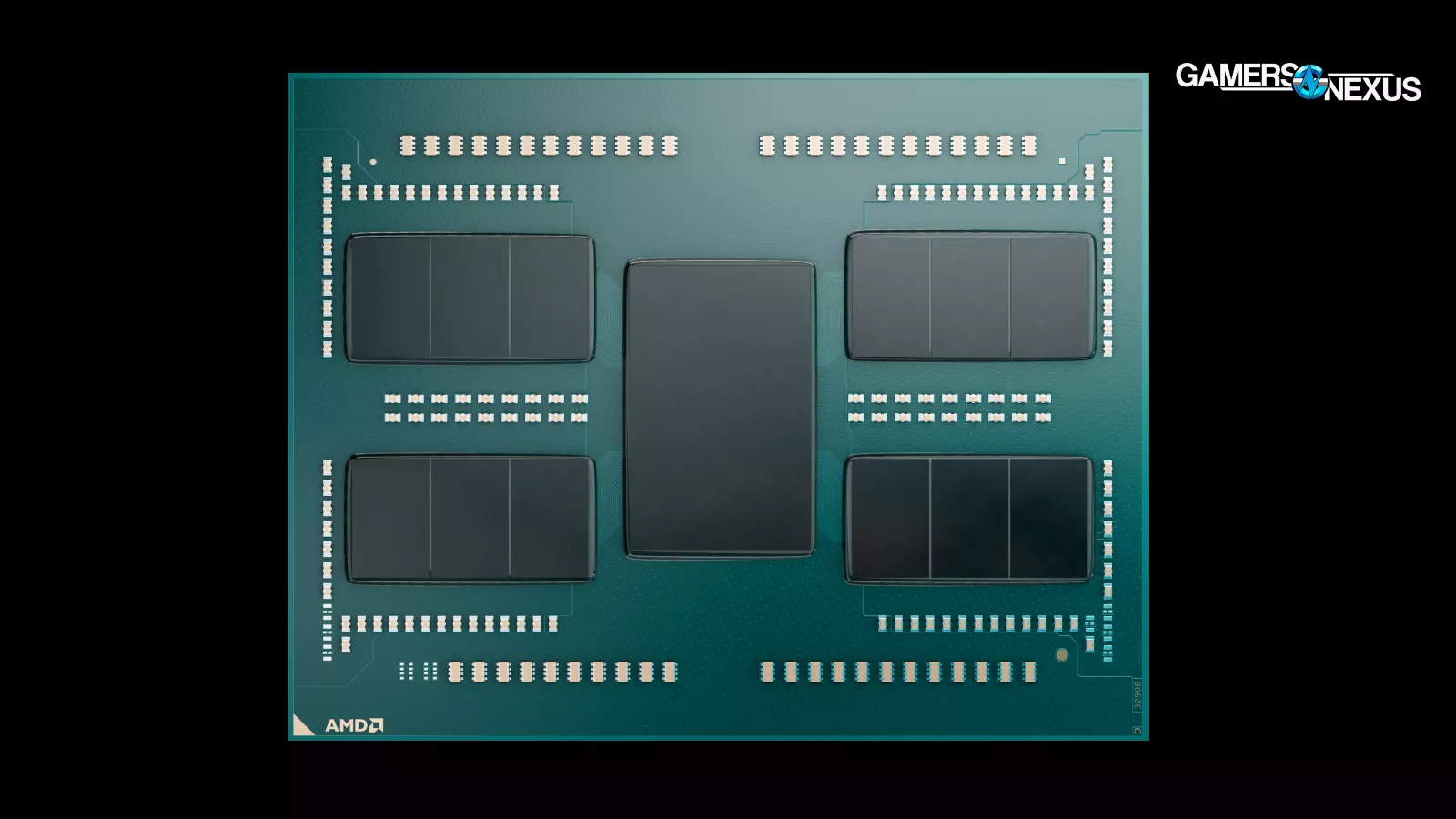
Threadripper PRO 7000 with 12 CCDs.
Internally to the CPU package itself, AMD had to rework both the I/O die itself and the die-to-die interconnects to allow for up to 12 CCDs, which is what’s enabling the higher overall core counts this generation. The central I/O die is flanked by two banks of three CCDs on each side, making it a complex package. The I/O die has a built in SATA controller that allows for up to 32 lanes of SATA connectivity straight to the CPU, which is a pretty interesting feature.
The 12 CCD layout only applies to the PRO parts for now, and the non-PRO get 8 CCDs arranged in a very similar but slightly different physical layout. This indicates that the substrates differ between the lineups.
New Platforms - WRX90 and TRX50
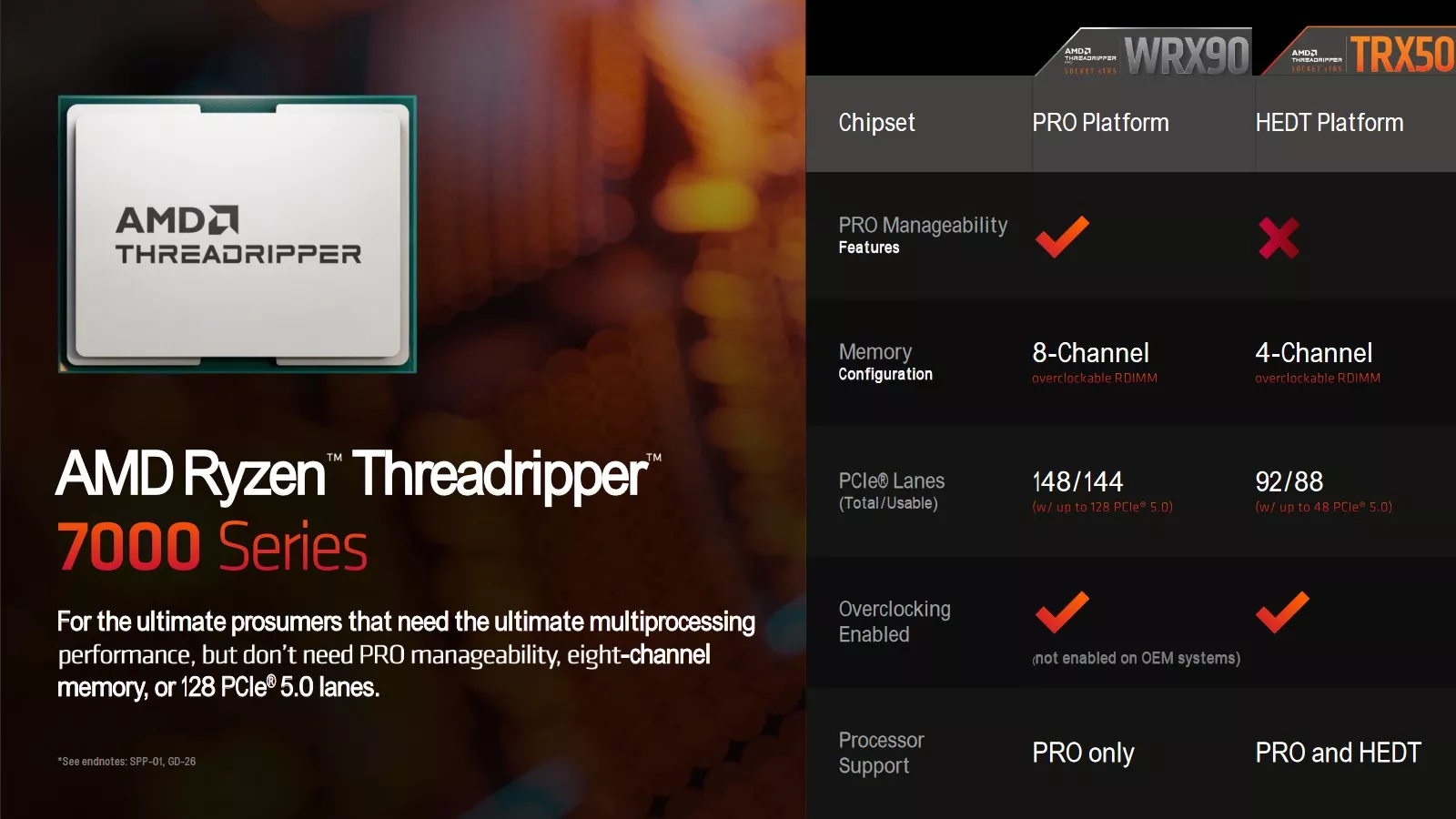
Unfortunately, we don’t have any new motherboards to look at yet, but we have some info on the two new chipsets. WRX90 is the platform for the PRO CPUs, and TRX50 is for the non-PRO HEDT parts. WRX90 can only run the PRO lineup, but TRX50 will be capable of running both sets of CPUs, but with cut down memory channels and PCIe lanes. AMD is letting you have your cake but you can only eat half of it, or something like that.
That means it would be possible to run the 96-core 7995WX in a TRX50 motherboard. AMD actually tried to make this a “one more thing” moment, but by the time that slide came up AMD had already mentioned it once, so the whole thing didn’t land. The awkwardness didn’t get better from there, because right after that the next slide had the potentially ominous statement, “Your time is valuable. Don’t waste it.” We’re choosing to interpret that as a comment on having just spent a week reviewing Intel’s 14th Gen CPUs, but AMD probably didn’t mean it that way.
Anyway, we have reservations about the practicality of putting the 96-core into a TRX50 board. The PRO CPUs are basically guaranteed to cost disproportionately more than the non-PRO, so doing all that just to run it on a platform where it’ll end up cut-down in memory and PCIe doesn’t make much sense to us. It’s good that it’s possible, though. There are one-off use cases for it, it’s just that consumers should understand there are some compatibility considerations to make regarding which chipset or board is best suited to your CPU.
This diagram shows the huge amount of connectivity possible with the WX-Series and the WRX90 chipset. There’s even audio straight off the CPU. AMD also shared a side-by-side view of the block diagrams for the connectivity of the CPUs themselves. It illustrates the disabled memory channels and lanes, albeit not very intuitively.
Performance
AMD shared some of its own first-party claims and expectations for performance, but we won’t get into these too much. We’ll be reviewing these and will have our own numbers to share anyway.
The chart for the PRO CPUs had each one as relative performance to a different Intel part, so it’s really hard to draw meaningful conclusions from aspects of it. However, the slide for the HEDT 7980X is easier to deal with. Comparisons here are between AMD’s new 64-core and Intel’s 56-core W9-3495X. AMD claims between 4% and 94% better performance, depending on the application being benchmarked. That’s quite the range.
Cooler Compatibility
We spoke with AMD about cooler compatibility. The company is still working on a compatibility list for the new Threadripper CPUs. Looking at it and speaking with cooler manufacturers though, some prior mounting hardware should physically fit the new Threadripper boards. The biggest concern will be coldplate contact patch, which should be as large as possible to cover the IHS. The die change will likely have new hotspots that could be tuned for more specifically with new coolers, but if you have an existing cooler, it could theoretically be made to fit. We can’t be sure until they launch or AMD provides a list, though.
Pricing and Availability
All of these CPUs and their motherboards should be available for retail sale on November 21. There’s also not going to be any period of exclusivity for OEMs that we’re aware of. That’s something that really made the last Threadripper PRO launch really strange, where the only way you could get them for months was through major system integrators like Lenovo. This time AMD’s going to let people just go buy them like with the original Threadrippers, and that’s a good thing.
| Cores / Threads | Price | |
| AMD Ryzen Threadripper 7980X | 64/128 | $5000 |
| AMD Ryzen Threadripper 7970X | 32/64 | $2500 |
| AMD Ryzen Threadripper 7960X | 24/48 | $1500 |
| AMD Ryzen Threadripper 3990X | 64/128 | $3990 |
| AMD Ryzen Threadripper 3970X | 32/64 | $2000 |
| AMD Ryzen Threadripper 3960X | 24/48 | $1400 |
Pricing for the non-PRO HEDT chips is higher than the last time AMD had non-PRO Threadripper in the 3000 series, especially at the high end. The 64-core is $1000 more, the 32-core went up by $500, and the 24-core is $100 higher. That’s going to put these CPUs out of reach of most regular consumers and most enthusiasts.
Unfortunately, AMD hasn’t announced the pricing for the PRO CPUs, but they’re bound to be disproportionately more expensive than the non-PRO. The same goes for the motherboards.
Conclusion

We're hoping to review these as soon as we can, so check back for that on release. We have plenty more coming in the meantime, so stay tuned.
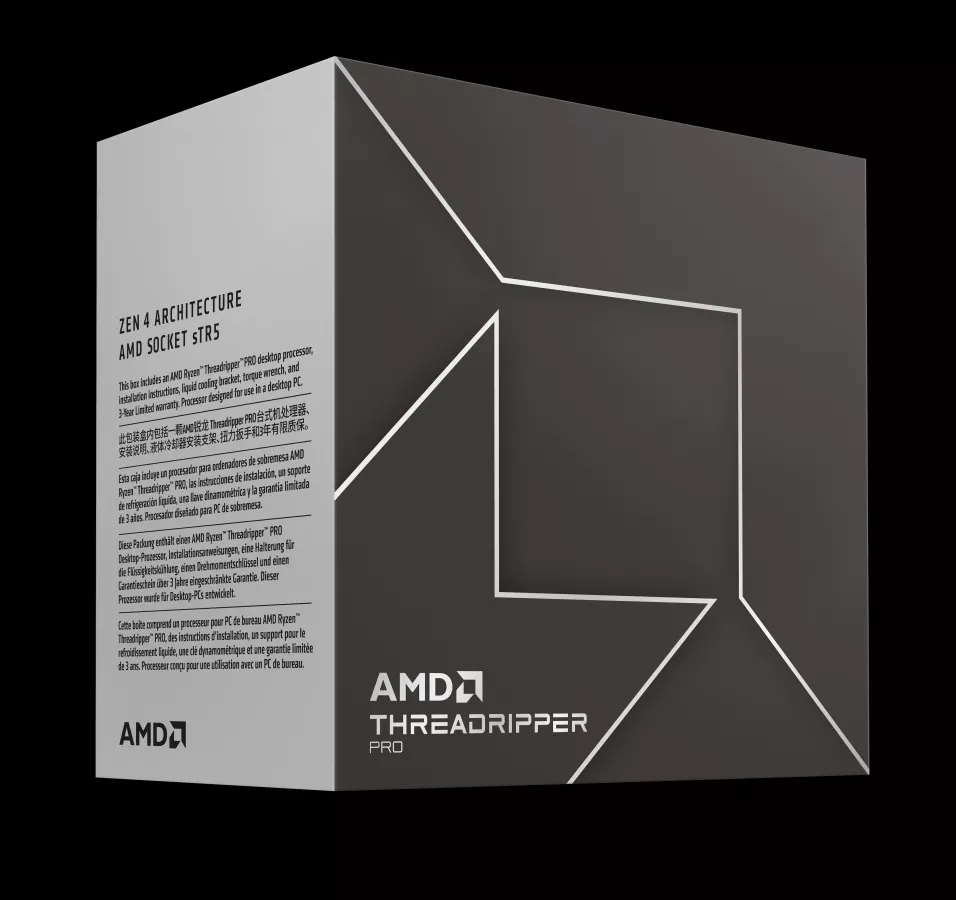
Threadripper PRO 7000 retail box. 
Threadripper 7000 retail box.
